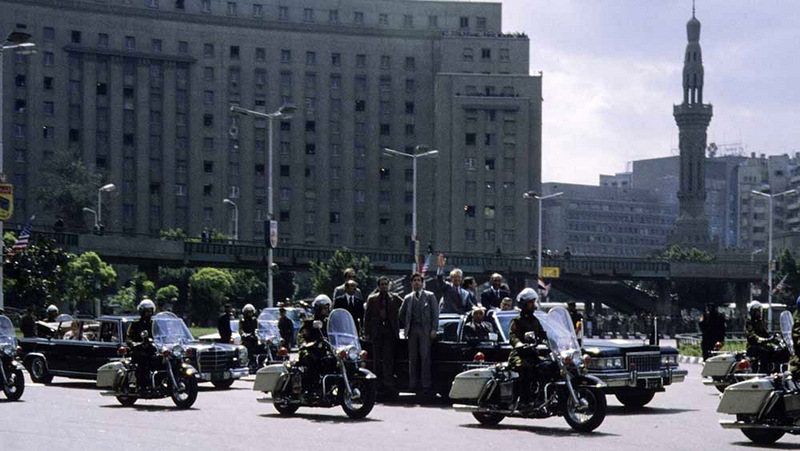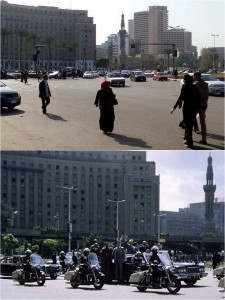
I took a year off from university between August 1978 and 1979 to backpack around Europe and parts of North Africa. After six months of traveling through Northern Europe, which included picking grapes at a vineyard in France and spending time as a goat herder in Northern Greece, I was on my way to explore the Greek Isles.
When I got to Athens, I checked into the Funny Trumpets hostel, a well-known magnet for young travelers. My roommates were a young couple from San Francisco who had attended the Grateful Dead concert at the base of the Sphinx five months earlier and were now on their way back to Egypt for a second visit.
The first night I arrived, they couldn’t stop telling me stories about their time in Egypt. They told me how easy it was to buy hashish and smoke it just about anywhere you wanted. They went on about how friendly and welcoming the Egyptians were and how crazy and beautiful the country was. As much as they tried to tempt me into joining them, I was pretty much set on touring the Greek Isles before going anywhere else.
The following evening, a few hours before the couple from San Francisco departed for the airport, we were sitting in our room, making preparations for our respective journeys. Suddenly, the door swung open and a young man named Hank stepped inside and asked if any of us were interested in traveling to Egypt. The San Francisco couple immediately invited him in.
While the couple was giving Hank pointers on where to stay and what to see, there was another knock at the door. This time an American student named Steve walked in and asked, “Is anyone interested in going to Egypt with me?”
The young couple were elated, as both Hank and Steve bombarded them with questions about Egypt. Hank and Steve quickly struck up a friendship and agreed to travel together in the coming days.

I had a giant map of the Greek Isles opened up on my bunk bed. I had been studying the map for the better part of the evening, but then I folded it up, stuffed it back in my bag and yelled, “Hey, do you mind if a third person joins you?”
“Hell no,” Steve replied. “The more the merrier!”
The following day Steve, Hank and I ran around Athens securing our Egyptian visas and air tickets and picking up a few odds and ends for the trip.
It was around 11 p.m. when the three of us landed at the airport in Cairo. There, we hooked up with a funny little man wearing a bell captain’s cap. His name was Fil Fil, or Pepper, and his job was to bring young travelers to hostels in the center of Cairo for a small commission.
We all boarded bus 600, which ran between the airport and Tahrir Square, located in the very center of Cairo.
I could hardly believe my eyes when we arrived at the city center. It must have been well past midnight, and the streets were thronged with people window-shopping, sitting in cafes and eating. My first impression of Cairo was that it was what I imagined New York would be like at that time of night.
We were unable to find space at the Golden Hotel, which the San Francisco couple had recommended, so Fil Fil took us to another small hotel where we spent the first night.
To make a long story short, my two travel buddies only lasted a few days. After we traveled to Luxor by train, both Hank and Steve decided that Egypt was not for them and they hightailed it back to Greece. I, on the other hand, continued my journey south, and even spent seven days on a Nile barge that supplied settlements on Lake Nasser with essential foodstuff and other supplies.
After spending a month roaming the country, I returned to Cairo and the Golden Hotel.
On March 7, my first night back in Cairo, I ran into a Canadian traveler in the lobby who handed me a small packet of fresh peanuts.
“Thanks,” I said. “But why peanuts?”
“Jimmy Carter is coming to town tomorrow,” he said. “And in celebration of his visit, I’m passing out peanuts.”
I was so consumed with my own day-to-day life on the road that I was completely oblivious to what was happening around the world.
By March 1979, after years of American-brokered negotiations, Egypt and Israel were about to sign a historic peace agreement that would not only pave the way for formal diplomatic relations, but also return the Sinai to Egypt after Israel had annexed it in the Six-Day War of 1967.
The following day, March 8, I was on my way to the presidential palace to try to catch a glimpse of Carter. On the bus ride there, I met an Egyptian student who was also on his way to see Carter, but he insisted that the airport would be a much better place.
When we arrived at the airport, we were prevented from entering, so we had to stand along the route of the motorcade with tens of thousands of Egyptian spectators. We tried desperately to push our way through the crowds to get a better view, but it was impossible.
When Egyptian President Anwar Sadat and Carter finally passed in their open limousine, I could barely see anything and there was no way I could take a photograph. Instead of being thrilled by the experience, I was frustrated for not having secured a good vantage point.
Two days later, Carter was scheduled to address the People’s Assembly, which was located near Tahrir Square. I was determined to be in a good position this time, so I got to Tahrir Square early and found what I thought was an excellent spot. Unfortunately, when the motorcade approached, the crowd surged forward and my vantage point was suddenly filled in with onlookers.
My last chance to try and photograph the two leaders came after Carter addressed the People’s Assembly. Unfortunately, the crowds had almost doubled in size by that time and it looked like there was no chance in hell for me to see the motorcade, let alone take a photograph. I had one trump card, though, that I was going to try and use.
Shortly before the motorcade arrived, I walked up to a police officer and showed him my U.S. passport. I told him I would like to be in a good position to see “my president.” He smiled, grabbed my hand and pulled me through the crowd. He took me behind police lines and sat me down on the edge of Tahrir Square.
Thanks to the officer, I was able to squeeze off two frames of Carter and Sadat standing in an open limousine surrounded by security and a police motorcycle escort.
It was no Pulitzer Prize-winning photograph, but it still meant a lot to me. I only wonder whether my determination to take that photograph had anything to do with my decision to become a photojournalist five years later.
Last month, I was in Egypt working on a documentary film. Just before leaving the country, I returned to Tahrir Square to take a photograph from the very same spot where I photographed Sadat and Carter 35 years earlier.
From the same angle, everything things looks pretty much the same. Only when you take a 360-degree turn do you see the changes that have taken place.
Street venders on the square caught my eye. They were selling t-shirts and other paraphernalia praising Egyptian “strongman” and presidential candidate Field Marshal Abdel Fattah el-Sisi.
It’s ironic that Tahrir Square, once the symbol of change in the country, has reverted back to something more familiar: the old guard, the military.

